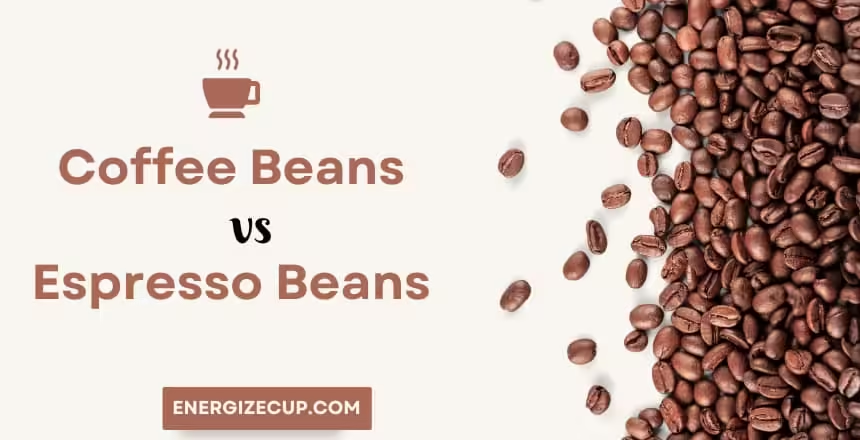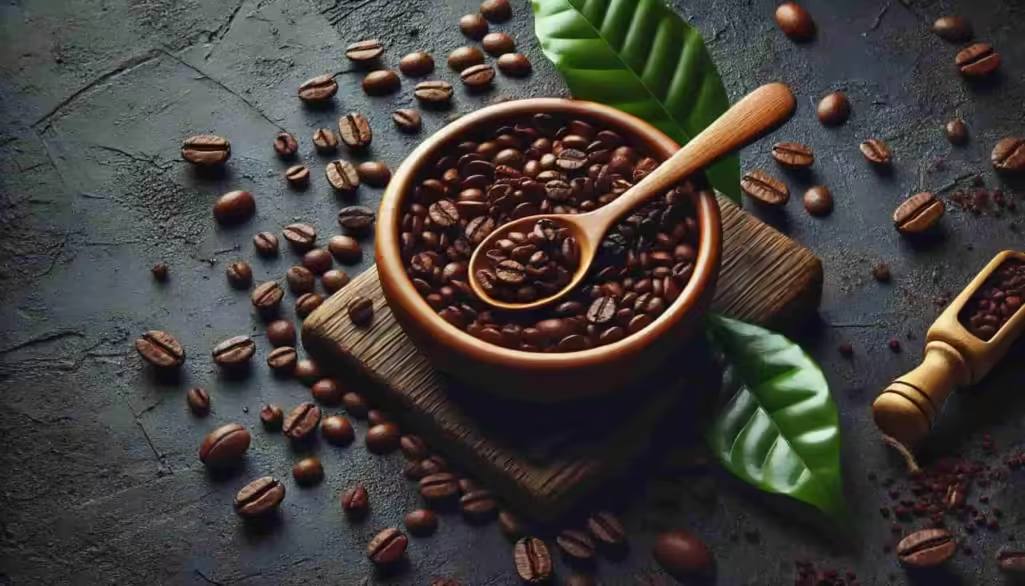
Espresso vs Coffee Beans: Taste the Difference! (Exploring)
Millions of individuals relish both coffee and espresso, but understanding the beans used in each can enhance your appreciation. Differences exist between espresso and coffee beans, each contributing to the distinct characteristics of these popular beverages.
This exploration will detail these differences, highlight top espresso beans, and dispel the common misconception that espresso is less potent than coffee.
Exploring Espresso Beans
Espresso is often the highlight for those who love coffee, known for its smooth and creamy texture. It’s interesting to learn that specific beans are cultivated mainly for making espresso.
These beans undergo a meticulous roasting process to enhance their flavor profile and produce oils, which contribute to the creamy layer, or crema, that tops the espresso. With their robust and rich flavors, espresso beans are perfect for crafting strong beverages such as lattes, cappuccinos, and classic espresso shots.
Diverse World of Coffee Beans
In contrast to espresso, coffee is available in a wide array of forms, each boasting distinct flavors and aromas. Coffee enthusiasts can choose from the intense flavors of Colombian beans to the mild sweetness of Ethiopian Yirgacheffe.
Whether you prefer your coffee light, medium, or dark roasted, there’s a variety to satisfy every palate.
Also Read: Frappuccino vs Latte: What’s Better? [Taste Test]Flavor Profile Comparison
Espresso and coffee beans exhibit unique taste characteristics. Espresso beans are noted for their intense flavors, often with undertones of chocolate, caramel, and spices, while coffee beans range in flavor from sweet and fruity to earthy and bitter. Espresso beans are roasted to a precise temperature to unlock their complex flavors, resulting in a strong and well-balanced beverage.
It’s important to note that each type of coffee bean, including those for espresso, offers a distinct taste experience. Whether you enjoy the delicate flavors of brewed coffee or the robust intensity of espresso, there’s something for every coffee lover to explore.
Selecting Premium Espresso Beans
Choosing the finest espresso beans involves several considerations. For optimal taste, opt for freshly roasted beans. The roast level is also crucial—decide whether you prefer the vibrant and smoky notes of a lighter roast or the richer and bolder notes of a darker roast. Some top choices for espresso beans include Illy Classico, Blue Bottle Espresso, and Lavazza Super Crema.
Comparing the Strength of Espresso and Coffee
Contrary to widespread belief, espresso generally contains less caffeine per ounce than regular coffee. An espresso shot typically holds 63 mg of caffeine, while regular coffee has about 12-16 mg per ounce. However, because espresso is consumed in smaller amounts, it may seem stronger due to the rapid release of caffeine.
Brewing Techniques: Espresso Versus Coffee
The preparation methods for espresso and coffee significantly differ, affecting their flavor and strength. Espresso is made by forcing hot water through finely-ground coffee under high pressure, quickly extracting rich flavors.

In contrast, coffee is often brewed using drip, French press, or pour-over methods, which allow for a slower extraction, yielding a gentler flavor profile.
Creative Espresso-Based Drinks
Espresso is not only enjoyed by itself but is also a versatile ingredient in various beverages. Whether you’re craving a dense affogato, a smooth cappuccino, or a velvety latte, espresso offers numerous possibilities for delightful drinks.
Why not try making your own espresso-based beverages at home? This way, you can enjoy barista-level drinks without stepping outside.
Mastering Your Brew
Perfecting your coffee or espresso involves a lot of trial and error along with meticulous attention to detail. Start with high-quality beans, grind them to the appropriate coarseness, and pay close attention to water temperature and brewing duration.
Explore different brewing methods and ratios to discover the most satisfying flavor combination. Remember, the journey to the perfect cup is part of the enjoyment!
Also Read: Coffee Manga: Sip & Flip Through Artful Stories [Culture Fusion]Exploring the Health Advantages of Coffee and Espresso
Coffee and espresso not only delight our taste buds but also offer potential health benefits when consumed in moderation.
Research indicates that regular coffee consumption can reduce the risk of several diseases, including type 2 diabetes, Parkinson’s disease, and Alzheimer’s disease. This popular beverage contains caffeine, a natural stimulant that enhances mental focus, accelerates metabolism, and boosts physical performance.
Debunking Common Coffee Myths
Despite widespread acclaim, coffee and espresso are often encircled by myths. One prevalent misconception is that espresso is inherently bitter. In reality, when properly prepared, espresso exhibits a complex flavor profile with subtle sweetness and richness.
Another myth suggests that darker roasts contain more caffeine. However, the roasting process actually reduces caffeine content in coffee beans, disproving this common belief.
Sustainability Efforts in the Coffee Sector
As consumers, we have a responsibility to consider the impact of our coffee consumption on the environment and society. Supporting sustainable coffee production practices can enhance the livelihoods of coffee farmers while safeguarding the environment and wildlife.
When purchasing coffee, look for certifications such as Fair Trade, Rainforest Alliance, and Organic, which indicate adherence to environmentally and socially responsible practices.
Guidance from Coffee Experts
We consulted industry experts for their recommendations on selecting the best coffee beans and brewing methods. Top coffee connoisseurs advise purchasing fresh beans to fully capture their flavor potential. Experimenting with different types of coffee, suppliers, and brewing techniques can help you find your perfect cup.
Conclusion
Ultimately, understanding the subtle differences between coffee and espresso beans can deepen your appreciation for these beloved beverages. Whether you’re enjoying a warm cup of brewed coffee or a rich, creamy shot of espresso, each sip tells a tale of craftsmanship and passion. Exploring the intricate world of coffee beans promises a delightful adventure that will satisfy your palate and engage your senses.
FAQs Espresso vs Coffee Beans.
1. Can coffee and espresso beans be used interchangeably?
While a variety of coffee beans can be utilized in different brewing methods, espresso beans are specifically blended and roasted for use in espresso machines.
2. What is the difference between espresso and coffee beans in terms of caffeine content?
Per ounce, coffee contains more caffeine than espresso. However, espresso’s concentrated form and quicker extraction may seem more potent.
3. How should coffee and espresso beans be stored to maintain their freshness?
To preserve the flavor and aroma, store your beans in an airtight container away from heat, light, and moisture. Consider using a vacuum-sealed container or a ceramic jar with a tight lid.
4. Can regular coffee be made from espresso beans?
Yes, although espresso beans are tailored for espresso machines, they can also be used to make regular coffee using AeroPress, pour-over, and French press methods. Adjusting the brewing settings and grind size can enhance the flavor.
5. Are espresso beans different from coffee beans?
Yes, espresso and coffee beans differ. Both originate from coffee plants, but coffee beans are more versatile and suited for various brewing methods. Espresso beans, on the other hand, are specifically roasted and blended for espresso machines.